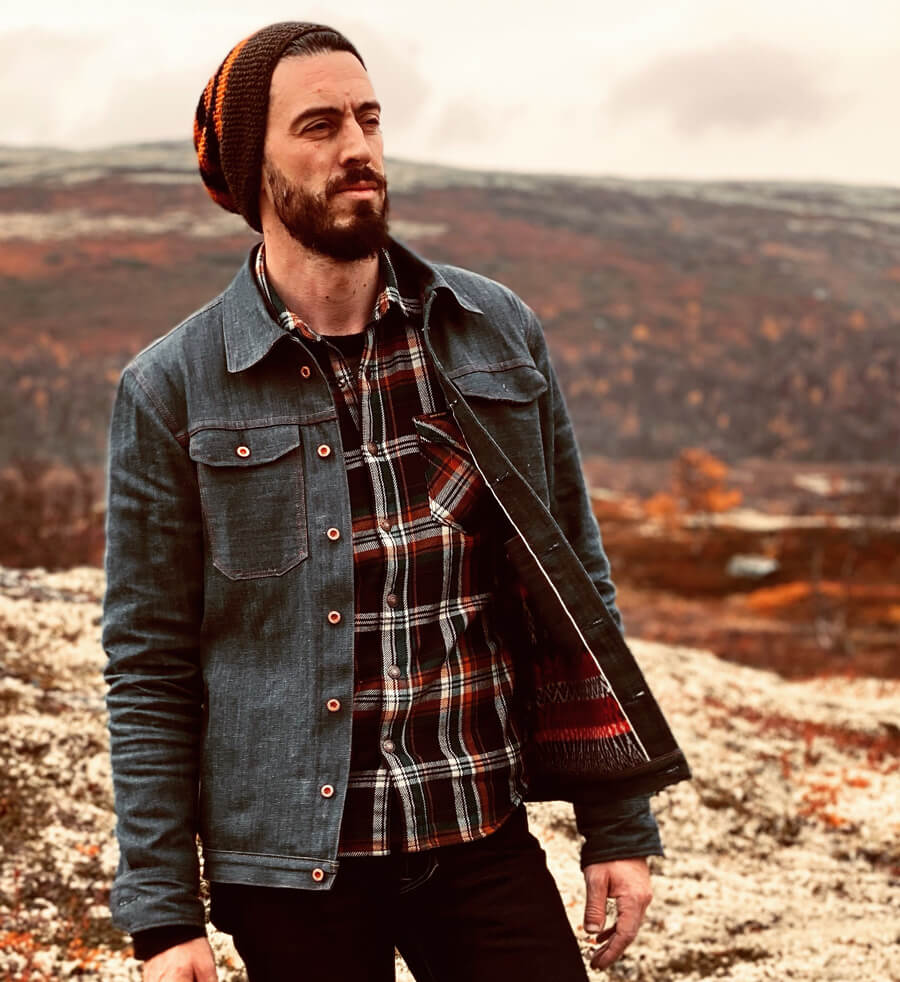Denim Herstory: Celebrating International Women’s Day with a Look at Female Denim Trailblazers
The history of denim is often riveted securely to the history of the working man. As fascinating as this history is, it’s incomplete. Denim may have started as a fabric designed with working men in mind, but it’s become a wardrobe staple for both sexes.
The history of denim is often riveted securely to the history of the working man. As fascinating as this history is, it’s incomplete. Denim may have started as a fabric designed with working men in mind, but it’s become a wardrobe staple for both sexes. The male-centred story focuses on denim’s gradual movement from pigeonholed workwear fabric into the mainstream, but, when we put women in denim under the microscope, we see that they had to fight much longer and harder than the men. They had to fight for their right to wear denim. We begin in the early part of the nineteenth century, with a woman who bucked conventional wisdom about what women should and shouldn’t wear. In 1825, Fanny Wright became the first female to wear pants in public. The wide-legged Turkish-style trousers were a loud statement about a woman’s right to wear what was most practical and comfortable. It’s difficult to overstate just how radical (and outrageous to some) this statement was.
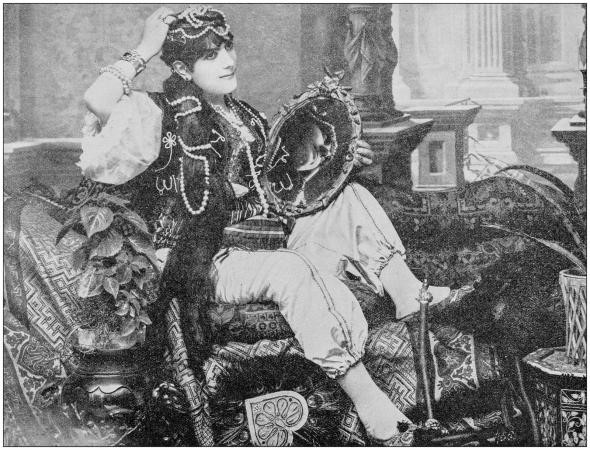
**Fanny Wright in her Turkish trousers** The style was picked up by Elizabeth Smith Miller. As the daughter of a wealthy abolitionist, Congressman Gerrit Smith, Miller had political and social connections that meant her fashion choices had something of a ripple effect. Progressively minded women started imitating her, but few of them were able to withstand the flurry of condemnation that came with their radical fashion choice. Elizabeth Cody Stanton, a cousin of Miller’s, stuck to her guns and wore the trousers with her head held high. “The question,” she said, “is no longer how do you look, but woman, how do you feel?”
En Vogue
When Levi’s released their first women’s jeans in 1934, they weren’t creating an opportunity so much as they were seizing an existing one. In the American Southwest, dude ranches had become a popular destination for urban women seeking escape from city life. The fashion rules on the ranch were very different from those in the city, and women were encouraged to adopt the uniform of the cowboy so they could be at ease both in their surrounding and in the saddle.
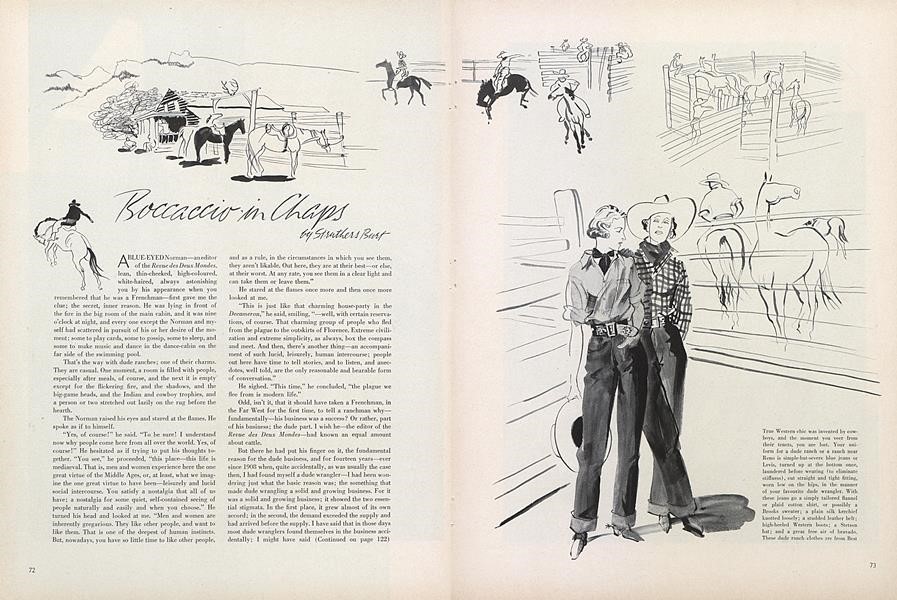
**Vogue – May 15, 1935** By 1935, Vogue did a feature on the dude ranch phenomenon including pictures of women wearing denim at the ranch. The look was far from the mainstream. It was still very much a novelty, but it’s appearance in Vogue was significant. It showed a growing acceptance of denim as a womenswear fabric.
Rosie Wears the Pants
This was a dramatic change from attitudes towards women in denim that had dominated early in the century. Denim was seen as men’s workwear. Women wearing jeans was nothing short of scandalous. When, during WWI, women rolled up their sleeves and their cuffs to take the factory roles vacated by those serving overseas, they encountered considerable resistance to their choice of apparel. They wanted to wear something comfortable and durable, but men insisted that, even though they were doing the kind of work normally reserved for men, women should still dress like ladies while doing so. By the 1940s, when 6.5 million women entered the workforce during the Second World War, attitudes had changed. When women returned to the factory floor, they were able to do so confidently wearing denim. Norman Rockwell perfectly captured the can-do spirit of these women with his Rosie the Riveter. Though it was J. Howard Miller’s “We Can Do It” poster that went on to become the most iconic image of the female-supported war effort, Miller’s poster wasn’t particularly popular at the time. Rockwell’s Rosie, which appeared on the cover of the Saturday Evening Post and went on to appear in a number of bond drive posters, struck a chord with the public, thanks in large part to the fact that attitudes towards women in denim were, like a great pair of jeans, softening.
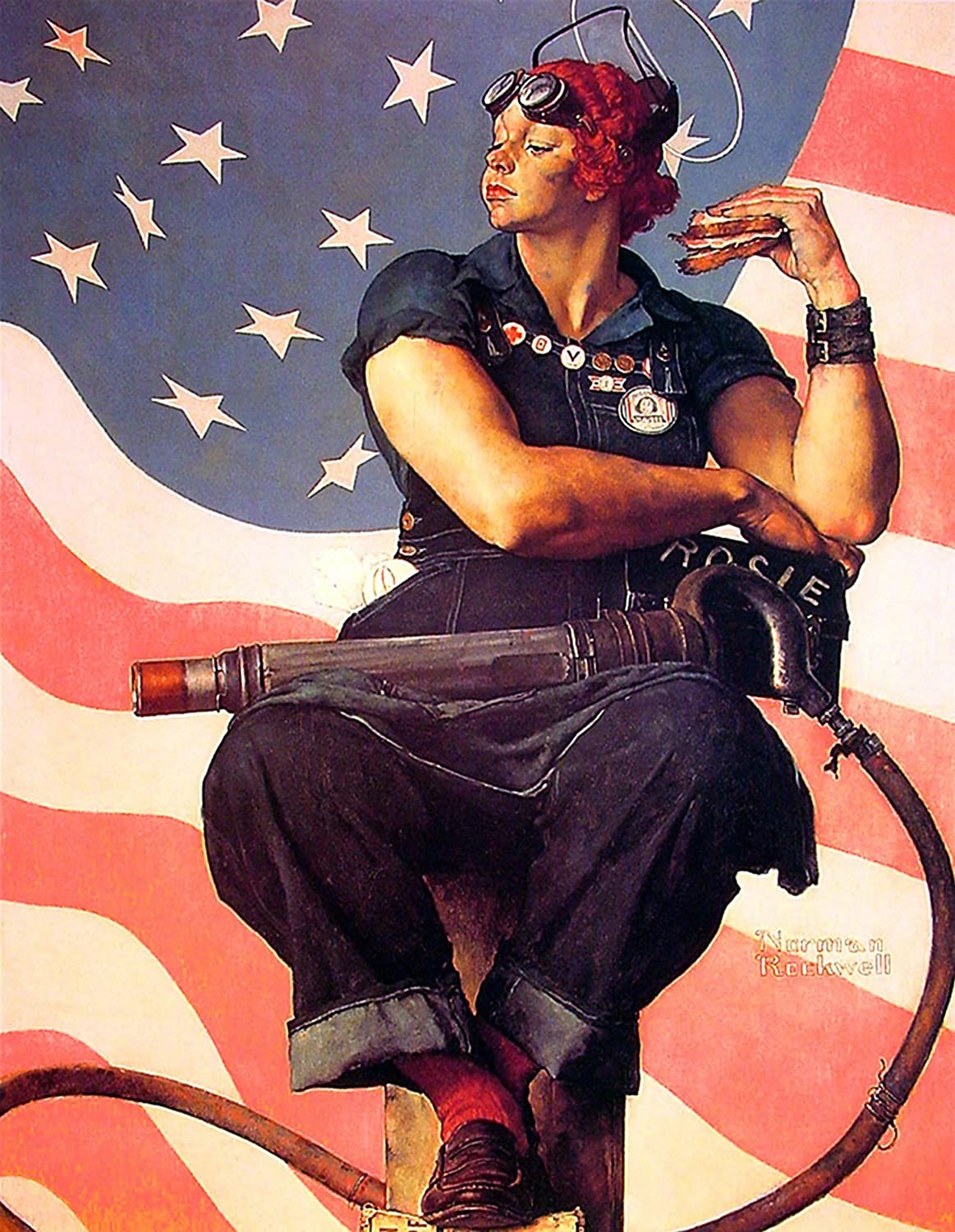
**Norman Rockwell’s Rosie the Riveter Rockwell’s Rosie is, above all, capable. She is not represented as a virginal and delicate flower or a sexualized and vivacious pin-up girl. Instead, she is muscular and calmly self-assured—her face turned towards the sun, her sleeves rolled up to her shoulders. She turns the wheels of industry with her bare hands—and she does it clad entirely in denim. When the serving men returned after the war, there was a concerted effort to return women to more domestic roles. Some women welcomed the chance to slip out of their denim and back into the dresses and aprons, but others, having tasted independence and freedom, preferred to remain in their jeans. The genie was out of the bottle. It was no longer just the men that would “wear the pants”.
Hollywood Trendsetters
When we think of iconic black-and-white film stars wearing denim, it’s perfectly natural for Marilyn Monroe to leap to mind. Her appearance in Clash by Night in 1952 was part of a broader trend. Hollywood stars like Marlon Brando in The Wild Ones (1953) and James Dean in Rebel Without a Cause (1955) were making denim sexy for men. Marilyn was doing the same thing for women, and she had beaten the boys to the punch.
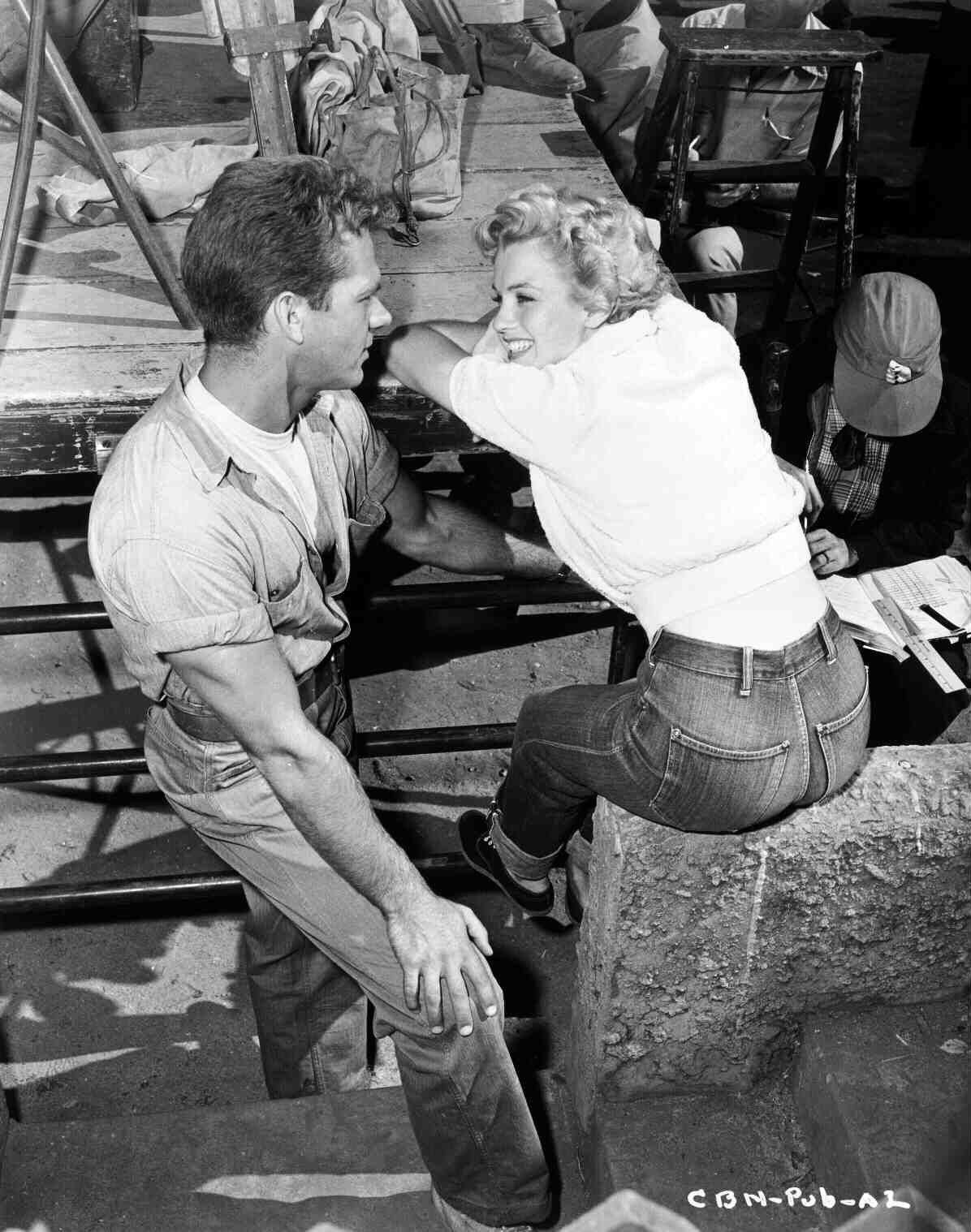
**Marilyn Monroe in Clash by Night** Though this marked a key moment in the history of denim’s broad cultural appeal, Marilyn was effectively pushing at an open door that had been forced open by her predecessors—particularly Katherine Hepburn. Hepburn was not only the first woman to wear trousers in a major motion picture (with Greta Garbo and Marlene Dietrich hot on her heels), she was also one of the first stars of the silver screen who wore denim when the cameras weren’t rolling. Her studio bosses were less than thrilled with her attire. When she was on set filming a picture for RKO, one of the producers snuck into her dressing room and stole her jeans. When she discovered the theft, she returned to the set in her underwear and refused to cover her bottom half until her jeans were returned.
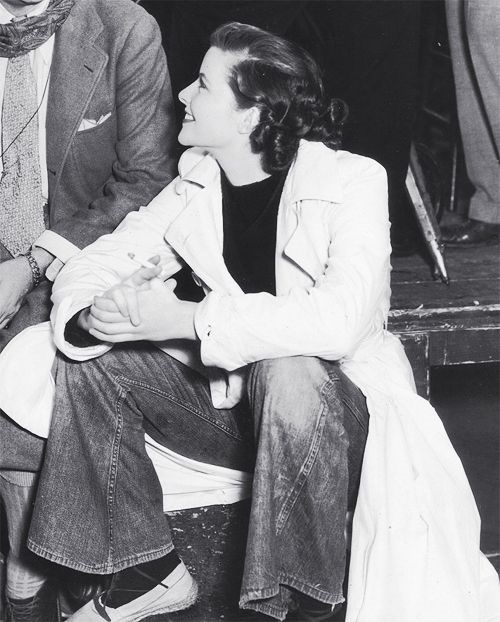
**Katherine Hepburn in her well-worn jeans** Later, when she was told by staff at a prestigious London hotel that she could not wear pants in the lobby, she chose to enter via the staff entrance rather than change her clothes. Hepburn’s willingness to go her own way, even in the face of stern opposition, set the table for the fashion revolution that was coming. Marilyn played her part in this revolution (and it was a big one), but she was merely reprising Hepburn’s role. Marilyn donned her Levi’s once again in the 1961 film The Misfits, and this time she doubled up on the denim, pairing her Levi’s with a Lee Storm Rider—an equally iconic denim jacket that had been popularized by male stars. It was still a tomboyish look, but Marilyn was proving once again that denim could be worn, and worn well, by women.
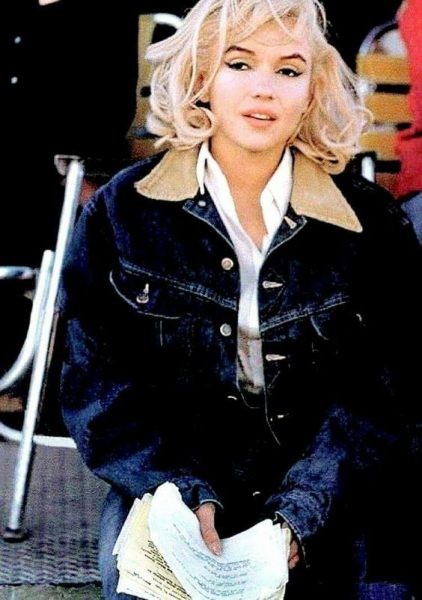
**Marilyn in her Lee Storm Rider** Again, Monroe was not the first to wear it or to wear it well, but she accelerated denim’s movement into the mainstream of women’s fashion. Like Katherine Hepburn, Rosie the Riveter, Elizabeth Cody Stanton, Fanny Wright, and Elizabeth Smith Miller, she played an important role in denim’s herstory.
To view full content and a better mobile experience, try

